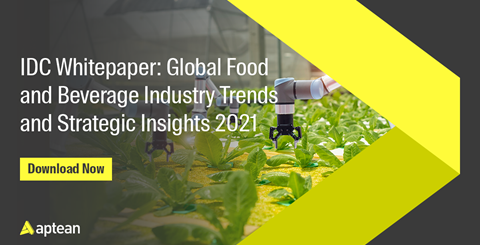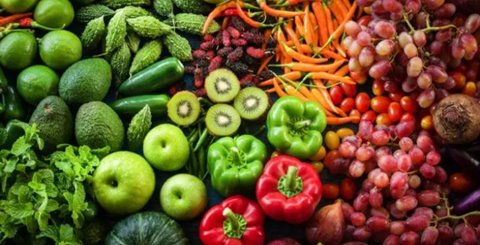Traceability in Food Manufacturing: A Holistic and Technology-Driven Approach
The supply chains of food and beverage businesses are getting more and more complex. From suppliers and processors to distributors, retailers and finally consumers, products—and the individual ingredients that go into them—make many stops along the way.
As an industry professional, you know it’s not good enough to simply know where your materials and goods have been and where they’re going. You need granular details, and you need them at each stage of the journey, from farm to store shelves and everywhere in between.
This complete, holistic approach to food traceability is a lofty goal, but it’s a must for every food and beverage organization hoping to compete in a rapidly shifting marketplace. Why is it such a pressing issue right now, though?
Let’s examine some key developments that have led to this new focus on visibility, transparency and accountability.
Increased Traceability Demands
One extremely important group demanding better traceability in food manufacturing is consumers. After all, these are the people who ultimately decide whether brands succeed or fail, and 94% say that they’d be more loyal to companies that offer a great degree of transparency in their products.
This emphasis on the accessibility of clear information stems from an increasing prevalence of mindful shoppers, as well as concern over food safety. Public health is front of mind for most with not only lingering COVID-19 considerations but also recent outbreaks of E. coli in leafy greens and unlabeled allergens in various Whole Foods products.
Regulatory bodies represent another source of pressure on food and beverage businesses to adopt better food traceability procedures. Starting with the founding of the Global Food Safety Initiative (GSFI) in 2000. This movement has picked up steam with the passing of the Food Safety Modernization Act (FSMA) in 2011 and now the U.S. Food and Drug Administration’s New Era for Smarter Food Safety.
Of particular interest right now is the planned addition to FSMA of Section 204, which will include additional traceability requirements. The main goal of this update is to establish standards for sourcing and tracing and to make the capture of key data elements and critical tracking points (CTPs) an industry standard.
Faced with these higher expectations and government mandates, food and beverage organizations will have to get serious about modernizing their systems not only for their own sake, but also for all of the other partners in their supply chain. Integration between departments and interconnectedness between businesses will be absolutely vital to creating a traceability plan that can stand up to these new demands.
Food Safety Preparedness
Back in 2004 with the introduction of the Food Allergen Labeling and Consumer Protection Act (FALCPA), the FDA identified the eight most problematic allergens: peanuts, tree nuts, milk, eggs, soy, wheat, fish and crustaceans. Since then, other foods like leafy greens, sprouts, herbs, peppers and melons have also been added to the various lists of products that are more likely to represent safety risks.
Obviously, proper labeling for the presence of allergens is a critical concern for any food and beverage businesses working with those ingredients, but to prevent contamination before it ever occurs, traceability is again the key. To capture all of the data you need—including not only where a product’s been, but what other products it has come into contact with, what lines it was on and which employees were involved—smart solutions like barcode and QR code scanners integrated with a purpose-built enterprise resource planning (ERP) system is the best setup.
But before we dive into the ways that these new technologies can push your traceability efforts forward, we should first touch on what must happen should something go wrong and a halt or recall needs to be issued. The following steps represent the “workstream” that these processes must follow:
-
Activate your organization’s traceability and recall team and record the case.
-
Assess the risk and determine the severity of the issue.
-
Dispatch key communications, including those to the FDA.
-
Issue an immediate hold on the affected products and trace the contamination to its source.
-
Establish the scope of your efforts and initiate the recall.
-
File all necessary paperwork after affected products have been successfully withdrawn.
Obviously, you’d prefer that your business never had to recall a product, but the importance of solid traceability practices is underlined when one examines how they can both prevent these issues from happening in the first place and also make them much easier to manage when they do occur. Here again is an area where ERP solutions shine, as they can help automate the process, ensure that your data is complete and accurate and reduce the overall time it takes to withdraw any problematic products.
The Role of Technology
With supply chain management and traceability in food manufacturing clearly vital for your organization’s operations, it becomes clear quite quickly that you can’t rely on paper records and human memory to manage these areas. Your company also can’t afford for each department to establish its own unique approaches to these efforts; a clearly defined, technology-based traceability strategy is necessary.
Solutions like Aptean Food & Beverage ERP come with industry-specific tracking, tracing, compliance and recall functionalities that you need to feel confident in an age where transparency and safety are paramount. With these tools, you’ll be able to dig into the reasons behind your food safety issues, ensure your processes are in line with regulatory standards and swiftly carry out any products withdrawals necessary.
Additionally, these systems also serve to unify businesses with a single source of truth and a shared interface that provides all staff with real-time metrics for both diving into the details as well as assessing the bigger picture. After all, traceability is not a problem that a single team can solve—it needs to be a priority for everyone in the company and a goal shared by all departments.
Aptean Food & Beverage ERP specifically is built to power your digital transformation with the ability to integrate seamlessly with barcode and QR code scanners, smart sensors and scales and other Internet of Things (IoT) devices that collect crucial data from your materials, products and processes. The platform is also well-suited to cloud-based deployments, which offer your business better reliability, continuity, access and security.
The emergent technology of blockchain will play a larger role in traceability in the coming years, as it allows for uncompromising accuracy and encryption. It will also increasingly be seen as a universal platform for information interchange, which makes it perfect for the food and beverage industry with its many splintered and far-reaching supply chains.
Getting Up to Speed
Traceability is no longer an area in which businesses can stand pat and accept that the “way it’s always been done” is still good enough. In fact, it might be the most pressing reason to either begin or push forward in your company’s digital transformation.
You need granular data captured and updated in your system in real time, and food manufacturing ERP platforms integrated with smart devices accomplish that goal better than any other approach out there. You also must have the tools to carry out complex tracing, tracking and safety procedures, and the best of these offerings come with robust options for covering all of your critical processes.
If your food and beverage organization is ready for the next step in your journey toward the future of food, reach out to us today to hear how Aptean Food & Beverage ERP can cover your traceability and food safety concerns today and down the road.
 Nederlands
Nederlands English
English



